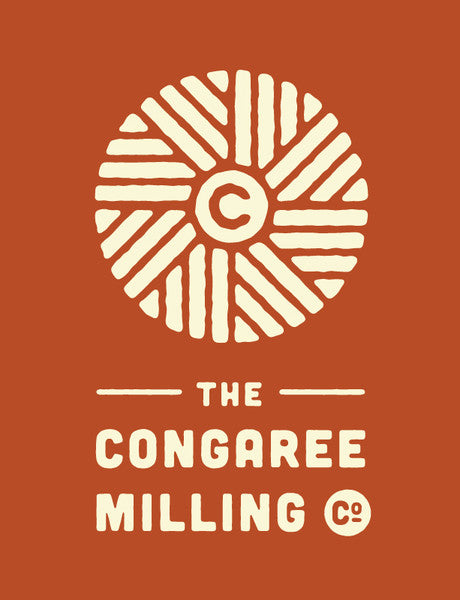What is a Gristmill?
"I own a gristmill"
"Oh, you mean a grits mill?"
"No, a gristmill."
This is a conversation I've had so many times, I usually don't bother to correct people. Being a smarty pants doesn't sell more grits, you know? But I do get hung up on this term. So let's do a deep dive, shall we?
Q: What is a gristmill?
A: A place where grain is ground into flour and other food products, and a machine that grinds grains.
Grinding grain goes back into pre-history, when hunter gatherers ground wild grains they foraged into finer particles making it an easier food to consume. Bread baking followed soon after, and the appeal of a steady food source eventually led to agriculture, settlement, and civilization as we know it. Cereal growing is generally known to have occurred in the Middle East or the Levant, although civilizations were developing in India and China around the same time.
The first mills were hand powered and made of stone. They still exist today in the form of querns, a term which dates back to Old Norse. These mills were a heck of a lot of work, but life in antiquity was brief and hard. More mechanically complex mills grew along with wheat agriculture, and the first water-turned mills date back to 71 BC. These mills used the force of flowing water to turn a stone (runner stone) that sat on top of a horizontal stationary set stone (bedstone).
Of course, there are many ways to turn a mill, amongst them wind (windmills), draft animals, and (very common in the 20th century) power take-offs on tractors, or even dedicated gas engines. The vast majority of modern mills are turned with electrical motors.
Although the first mills were probably used to mill ancient wheat, other grains, legumes, and nuts were soon ground on them, such as buckwheat, oats, rice, lentils, chickpeas, and anything that could be ground up into flour. When corn (zea mays mays) arrived in the warmer parts of Europe, the millers there immediately set to grinding it, making polenta (a food that dates back to ancient Rome) synonymous with ground corn, though the term predates corn's arrival there.
My mill doesn't grind anything but organic corn and oats, but I have experience grinding rice, buckwheat, ancient and modern wheat, and sorghum. All on stone-burr mills.
Although stone-burr mills are the earliest mills, there are all kinds of gristmills, including roller mills, hammer mills, and flail mills.
You may have guessed that there's much more to milling than just grinding grain. Soon after mills were powered with potential energy harnessed from nature, early engineers automated sifters, augers, cup conveyors, augers, blowers and all applicable kinds of labor saving machines to make better food products with less manual labor.
This article is by no means comprehensive, but I hope it quickly conveyed the basic concepts and terms involved in milling in an easy to understand way.
Check out this list of gristmills compiled by author Amy Halloran (thank you Amy!).
Here is a list of gristmills in South Carolina graciously compiled by SCIWAY.net. A very special thanks to Kerri.
Support your favorite small mill by purchasing something from these small mills practicing the storied tradition of milling!
